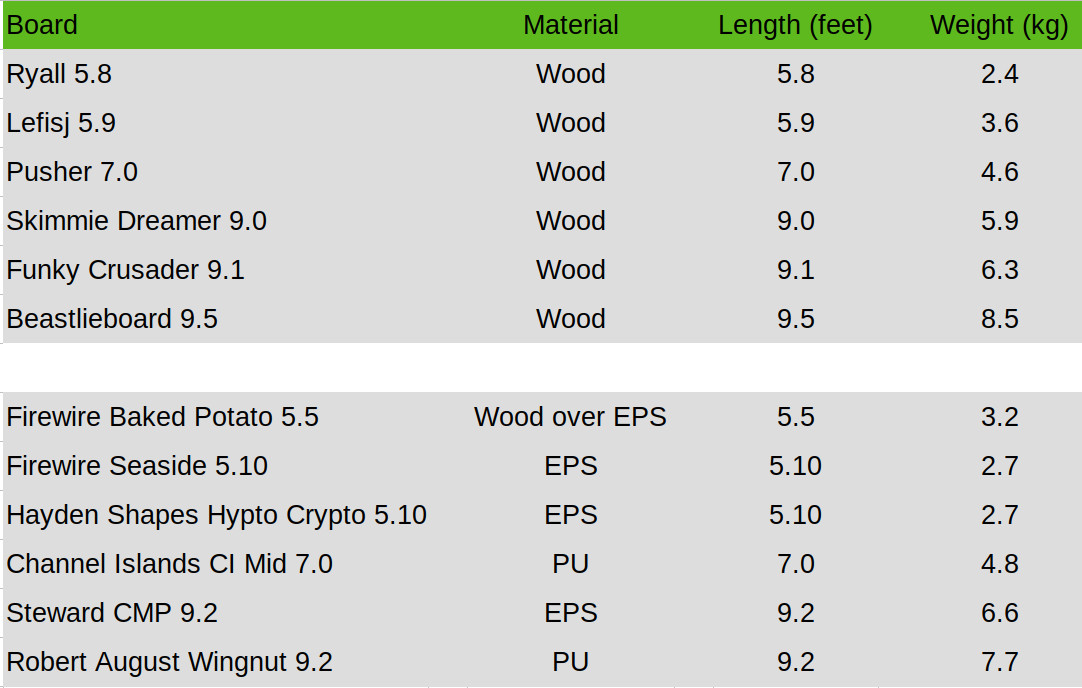
Easy. They're great to make, even better to ride, and -- using wood -- they're kinder to nature. Each Jabali board is made by hand, meaning it's one of a kind.
Jabali Surfboards is an initiative of Job Verpoorte in which he combines his love for science and creation with the pleasures of surfing and woodcraft. Building on his degree and career in engineering, he started making hollow wooden surfboards after seeing Irishman Fergal Smith catch small glassy waves on a wooden surfboard in an episode of 'Growing'. Having shaped in The Netherlands and Belgium Job set up in Portugal and works from his atelier in Braga.
It's a word picked up during a surf trip to Spain, where it means wild boar. If you ride like a jabali [ \ˌhäbəˈlē\ ], you ride strong with passion and focus, never giving up in tough conditions.
The punk wild boar represents all that and the independent spirit that makes surfing into what it is.
Our atelier is located in Braga and you are very welcome to pay us a visit from Sunday to Thursday. Just give us a heads-up before you knock on our door, otherwise we may be gone surfing.
Our boards surf just like surfboards. But we have made some adjustments over time to give them that familiar feel.
As for response and flex you can choose either a stiff classic or a more flexible supaflex construction to give you the response you like.
If you are an intermediate (or better) surfer there are bi-monthly opportunities to try our boards on test days. During our Summer Surf Promo Tour we travel along the Atlantic coast and organise even more test sessions possibly close to where you are. Keep an eye on our social media to find out where and when test sessions take place.
We build all kind of shapes and wavesurfboards but don't shy away from paddleboards, foil- and kiteboards either.
To help you start off we have a handfull of typical shapes in the 'boards' section - non-competition "fun"boards including short single fins, fishes, midsize stubbies, and 9+' longboards. These typical shapes have been tested by advanced surfers in Portugal, Spain and France to make sure they perform. The proof of the pudding is in the eating, after all.
The following image gives an overview of weight of Jabali boards. For convenience weights of a few popular foam boards are shown as well.

Obviously we repair Jabali boards, so if you live close by you can drop it off at the atelier.
If you live further away you will happy to know any expert dingdoctor will be able to repair your board partly thanks to firewires timberteks making wood generally accepted and partly because materials (wood, fibreglass and epoxy) are widely available.
Yes, our boards get bottom contours, such as nose concaves, single to double, hull and v-bottoms.
We offer a 4 day one-on-one masterclass during which you will part-take in part of the construction of your Jabali board.
We choose a one-on-one set-up so we can give you all the attention and time to teach you. Safety is another big issue because we are using serious cutting tools and glues and we don't want anyone to get hurt. Depending on your skill level and familiarity with shaping boards we cover lots or little ground, but in any case you will learn and know how your hollow wooden board is made.
We ensure the quality of your board meets the Jabalí standard and will finish whatever work you don´t finish so you get a board that rides well and looks good.
Drop us a message if you want more information.
Jabali surfboards has been assessed by sustainablesurf.org and is a qualified gold level ecoboard builder, which means we craft, verifiably, the most environmentally friendly surfboards currently available, worldwide.
Using sustainably grown wood as a base material is a step towards more ecological surfing. Wood is a renewable resource and a wood core is sturdy, does not loose flexibility over time and retains its natural beauty. We like to think wooden boards can be handed over or displayed on the wall once people retire from surfing.
An epoxy glue with a high (~35%) plant and vegetable matter content is used to glass our wooden boards and make them sea water resistant.
The next step towards 100% ecofriendly surfboards will be to replace fibreglass and other glues. As there are no proper substitutes available right now, we are looking at reducing the use of them.